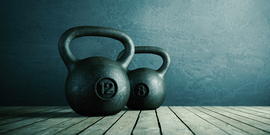Wrist weights, or hand weights, are small weights that are worn around the wrists during exercise. They are designed to add resistance to arm and upper body movements, helping to increase muscle tone, strength, and endurance. But, like any piece of workout equipment, hand weights come with their own set of pros and cons. In this article, we'll take a closer look at what you need to know before incorporating hand weights into your fitness routine.
Let’s start with a list of pros of adding wrist weights to your workout routine:
1. Increased muscle tone and strength: Wrist weights can add extra resistance to your movements, making your muscles work harder and leading to greater muscle tone and strength.
2. Targeted muscle development: Because wrist weights are worn around the wrists, they are especially effective at targeting the muscles in your arms and shoulders, including the biceps, triceps, and deltoids.
3. Convenient and versatile: Wrist weights are small and lightweight, making them easy to take with you on the go. They can be used in a wide range of exercises, and they can be incorporated into many different types of workout routines.
4. Variety: You can adjust the weight of your wrist weights to suit your fitness level and your exercise goals, and you can use them in a variety of exercises to add a new level of intensity.
5. Greater calorie burn: Because wrist weights add extra resistance to your movements, they can increase the number of calories you burn during exercise, which can help you lose weight and improve cardiovascular fitness.
6. Increased endurance: Using wrist weights in your workout routine can help your muscles work harder for longer, which can help to improve endurance and stamina.
7. Improved balance and coordination: Incorporating wrist weights into exercises like lunges and squats can help improve balance and coordination.
8. Rehabilitation: Wrist weights can be used to help people recover from injuries, building strength and endurance in the affected area and helping to prevent future injuries.
9. Yoga and pilates: Wrist weights can also be used in Yoga and Pilates classes to add an extra challenge to upper body work.
10. Mental benefits: The added challenge of using wrist weights can boost mental focus and motivation, making your workout more engaging and enjoyable.

Don't forget, it's also essential to start with a low weight and gradually increase it over time and to use proper form, and listen to your body during exercise. And, if you have any concerns about adding wrist weights to your routine, consult with a personal trainer or physician. They can help you determine if they are right for you and help you to incorporate them safely into your workout plan.
It’s also important to be aware of the potential cons of using wrist weights, and to use them correctly. Here you will find cons that will serve as information to avoid its misuse:
1. Risk of injury: Using wrist weights incorrectly or choosing weights that are too heavy can increase the risk of injury to the joints and connective tissues in the arms and shoulders. It's important to choose the right weight for your fitness level and to use proper form during exercises.
2. Difficulty in proper form: Due to the added weight, it may be more challenging to perform exercises with proper form, this could lead to a lack of proper muscle activation or straining other muscle groups. This makes it important to have proper guidance or instruction when using wrist weights.
3. Not for everyone: Wrist weights may not be suitable for everyone, particularly people with existing injuries or conditions that affect the arms and shoulders. It's important to consult with a personal trainer or physician before incorporating wrist weights into your workout routine.
4. Not always necessary: Wrist weights may not be necessary for everyone, if your goal is to lose weight or improve cardiovascular fitness, other types of exercises may be more effective. It's important to consider your fitness goals and whether or not wrist weights would be beneficial for you.
5. Overuse: It's also easy to overdo it with wrist weights, especially if you're new to them. It's important to start with a low weight and gradually increase it over time and pay attention to your body during exercise, and to stop if you feel any pain or discomfort.

In conclusion, hand weights can be a great addition to your workout routine, providing an extra challenge and helping to tone and strengthen your arms and upper body. However, it's important to be aware of the potential risks and to use them correctly. Hope this article helps you to get a proper workout and continue on your way to live stronger.
Looking for the best wrist weight?



